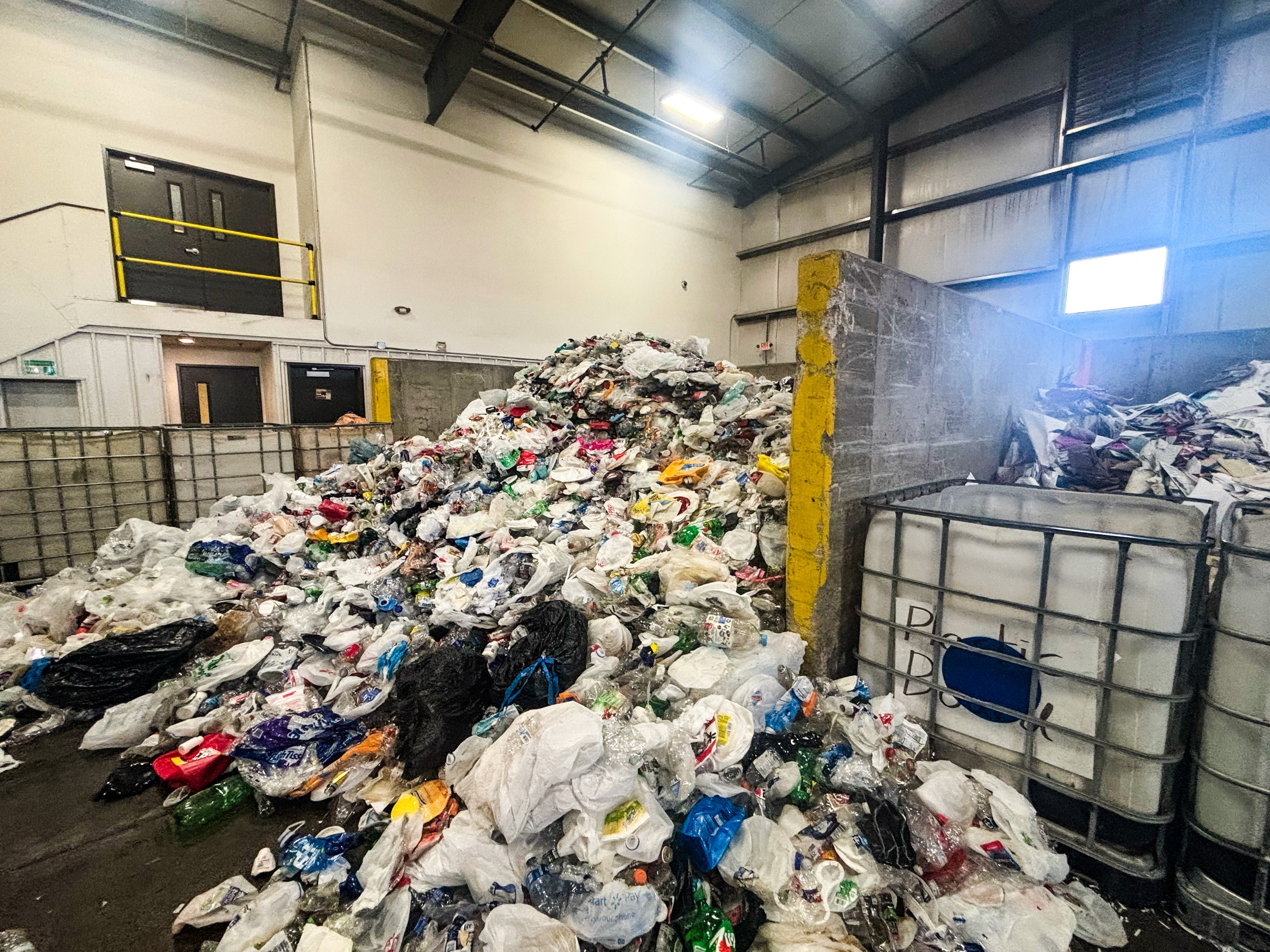Plastic Recycling Information
Plastics ready to be recycled at our facility.
Plastics #1-#7 Plastics are labeled with a recycle triangle with a number. You may place all plastics inany plastic bin. These include milk jugs, yogurt containers, water bottles, laundry detergent bottles. Please adhere to the following: Empty liquids from bottles and loosely replace caps. Food containers such as yogurt cups and peanut butter jars should be rinsed and lids removed, lids can be placed in the bin as well. Chemical containers must be completely cleaned out (it becomes dangerous to our employees if chemicals are accidentally spilled and/or mixed)
Other Plastics Plastics such as shopping bags, snack bags (chip, cookie etc.), candy wrappers, plasticwrap and other soft pliable plastics can be recycled but will ONLY be accepted in one of our special orange HEFTY ENERGY bags. These bags can be purchased at WRG or Keith County Chamber office.The cost of the bags is used to fund this program. Although many of our bins are marked as #1 or #2 Plastics, you can place ALL Plastics in the Plastic Designated bins.
We get it. Recycling can be confusing. Plastics #1-7. What does that even mean?
This is a complete guide to all things plastic. What each is, examples of these plastics and what they may become once they are recycled.
Plastic recycling numbers, also known as resin identification codes, are the numbers (1 through 7) you see inside the recycling triangle on plastic items. These numbers identify the type of plastic the item is made from and help recycling facilities sort and process them correctly. Here's a breakdown of each:
♳ 1 - PET or PETE (Polyethylene Terephthalate)
Common uses: Water and soda bottles, salad dressing containers, food jars.
Recycled into:
Fiber for carpets and clothing (like fleece jackets)
Strapping
Containers
Polar fleece
Notes: Usually recycled only once.
♴ 2 - HDPE (High-Density Polyethylene)
Common uses: Milk jugs, detergent bottles, juice bottles, some plastic bags.
Recycled into:
New bottles and containers
Plastic lumber (for decking and fencing)
Pipes
Playground equipment
Notes: One of the easiest plastics to recycle.
♵ 3 - PVC (Polyvinyl Chloride)
Common uses: Plumbing pipes, clear food packaging, shrink wrap, medical tubing.
Recycled into:
Pipes
Flooring
Mats
Traffic cones
♶ 4 - LDPE (Low-Density Polyethylene)
Common uses: Grocery bags, bread bags, some food wraps, squeeze bottles.
Recycled into:
Trash can liners
Floor tiles
Shipping envelopes
Plastic Lumber
Notes: Can be recycled in our Hefty ReNew Program.
♷ 5 - PP (Polypropylene)
Common uses: Yogurt containers, straws, bottle caps, medicine bottles.
Recycled into:
Signal lights
Battery cables
Brooms
Ice scrapers
Notes: Increasingly accepted by recycling programs.
♸ 6 - PS (Polystyrene)
Common uses: Disposable coffee cups, plastic food boxes, plastic cutlery, packing foam (Styrofoam).
Recycled into:
Insulation
Light switch plates
Egg cartons
Picture frames
Notes: Accepted in our Hefty ReNew Program.
♹ 7 - Other (Miscellaneous plastics, including PLA, nylon, polycarbonate)
Common uses: Sunglasses, computer cases, BPA-containing items, biodegradable plastics.
Recycled into:
Plastic lumber
Custom-made products
Hefty ReNew Program
Western Resources Group offers a program to recycle items that would in most case end up in our landfills. This program is funded through the purchase of Hefty ReNew bags at our facility and at the Keith County Chamber office. If you have any questions please call our office or stop by!




